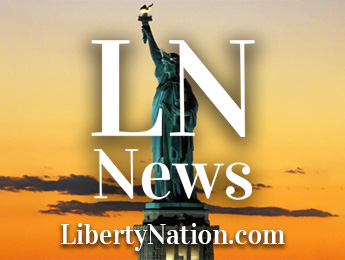This is the second part of a Guest Author piece. You can read the first part here on Liberty Nation.
In 1895 and 1896, the first large group of Armenians reached American shores. Some stayed in New York City, some ventured farther into the New England states, but the destination for most was Worcester, MA, where the first community was formed. The district of Worcester was the birthplace of the Revs. Jack Knapp and William Goodell, who had been missionaries in the Ottoman Empire for a long time. Through their schools and churches, Armenian students and parishioners learned about America and the opportunities it offered. In his messages to Congress, Goodell encouraged the United States to make a commitment to defend the Armenian population that for centuries had been protecting Christian principles in the Middle East.

Church of Our Savior in Worcester, Massachusetts – first Armenian Church in U.S.
Henry Lodge, the senator from Massachusetts, was inspired by Goodell’s letters, and he persuaded Congress to allocate more funds to the U.S. missions helping young Armenians come to America to obtain a good education. The Armenian National Aid Committee was created, headed by Elizabeth Wheeler. She was convinced that one of the sacred missions of America was to protect Armenians, no matter the cost. World War I and its aftermath affected the formation of the Armenian identity. The flows of refugees from the Ottoman Empire and Turkey pouring into America between 1914 and 1921 awakened the American Armenians to the deep suffering experienced by their compatriots in the homeland.
The massacres of Armenians in 1915 (later described as genocide), the military campaigns of Turks in the Caucasus, and, finally, the formation and fall of the independent Republic of Armenia – all these events were sources of concern to American Armenians, who lived at a great distance from their troubled homeland. Nevertheless, Armenian institutions in the United States provided spiritual and material support to their compatriots overseas, constantly in touch with the needs of their people.
The arrival of Armenians in the United States during that difficult period was not sudden or large-scale; they arrived continually before and after 1915. However, after 1924, the number of Armenian arrivals declined because of mandates that limited immigration. The 1920 census revealed 37,000 Armenian-speaking people born outside the United States, and in total, 52,000 Armenian-speaking people born in America or elsewhere. At that time, the refugees mostly joined already-existing Armenian communities, such as New York City and Troy, NY; Union City and Hoboken, NJ; and the suburbs of Boston, Watertown, and Worcester, MA. The Armenian population in Detroit, MI, grew from 337 in 1910 to 1,692 in 1930. That population growth was spurred by jobs at Henry Ford’s automobile plant, where employees earned $5 a day.
Both before and after the genocide, Armenians from certain areas of the Ottoman Empire settled in specific regions of the United States. For instance, many people from Kharberd settled in Worcester. Pawtucket, RI, attracted Armenians from Van, while the refugees from Tigranakert most often stayed in Jersey City. Over the years, the Armenian population smoothly overcame the gap between past Armenian rural lives and new metropolitan ones in American cities. However, by 1931, newly arriving Armenians and first-generation immigrants never forgot their abandoned villages in the homeland and used those memories as the foundation for building new lives in a new location. This was enhanced by informal organizations that supported Armenians socially.

Armenian settlers
The war and post-war periods in the United States strengthened the American identity of Armenians. During World War II, as well as during World War I, young Armenians used every opportunity to show their American patriotism. Many of them climbed to great heights. For example, Hayk Shekerjian became the first American of Armenian origin to graduate from West Point Military Academy. During World War I, he served as military attaché in Greece, then fought in the Middle East. After World War II, President Franklin Roosevelt honored him for wartime bravery and awarded Shekerjian the rank of brigadier general. Another famous hero was Ernest Dervishian, saluted by Gen. Dwight Eisenhower. For showing bravery during the fierce battle of Cisterna on May 23, 1944, Dervishian was awarded the Medal of Honor.
In general, the Armenian community was absorbed almost seamlessly into American culture and quickly integrated into American society. At that time, deep mutual understanding blossomed, created by shared conservative and Christian values. Not surprisingly, influential modern-day representatives of the diaspora — former California Gov. George Deukmejian, former Rep. Charles “Chip” Pashayan (D-CA), and speechwriter and adviser to Presidents Richard Nixon and Ronald Reagan Kenneth Khachigian – defended the conservative traditions of the United States. Today America, the primary defender of Christian civilization, remains strong in its ties to Armenia. In turn, American Armenians have fostered and enhanced the strong friendship between the two countries that has lasted for decades.
Arthur Ghazinyan, Ph.D., is a regular contributor to Forbes and The American Thinker and is the head of the European Studies Center in Yerevan, Armenia.
~
At Liberty Nation, we love to hear from our readers. Comment and join the conversation!



